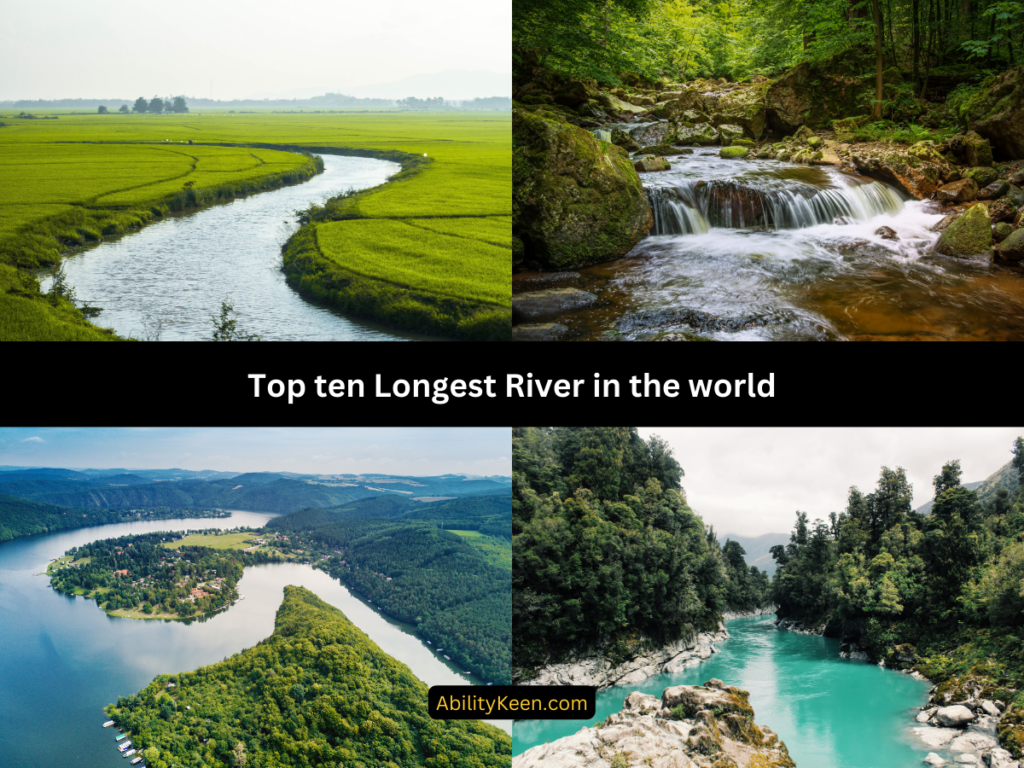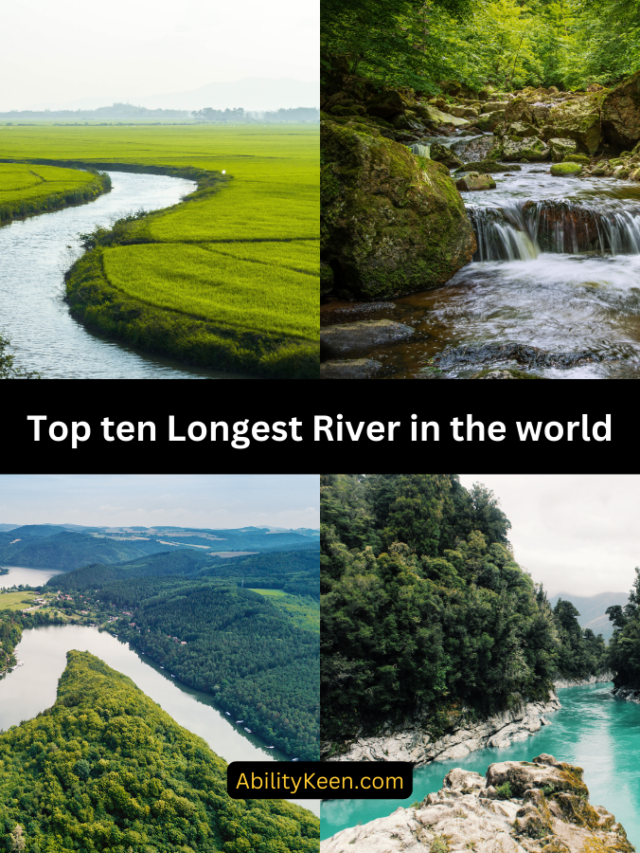Something About River
Rivers have played a pivotal role in shaping the landscapes and cultures of our planet for millennia. They provide water, sustenance, and connectivity to countless communities and ecosystems around the world. In this web story, we embark on a journey to explore the top ten biggest rivers, delving into their unique characteristics, geographical significance, and the vital roles they play in our global ecosystem

- The Nile River: Spanning approximately 4,135 miles, the Nile River is often regarded as the world’s longest river. It flows through northeastern Africa, nourishing several nations, including Egypt and Sudan. The Nile has been a lifeline for ancient civilizations, serving as a source of water, transportation, and fertile soil for agriculture.
- The Amazon River: The Amazon River, with a length of around 4,000 miles, is renowned for its vastness and biodiversity. Flowing through South America, it is home to an astonishing array of wildlife and dense rainforests. The Amazon plays a crucial role in regulating the planet’s climate and houses an incredible diversity of plant and animal species.
- The Yangtze River: China’s Yangtze River, extending approximately 3,917 miles, is not only the longest river in Asia but also a vital part of Chinese history and culture. It flows through some of China’s most populous regions and serves as a major transportation route.
- The Mississippi-Missouri River System: The Mississippi-Missouri river system, totaling around 3,902 miles, ranks among North America’s most iconic waterways. It winds through the United States, impacting commerce, agriculture, and ecology. The Mississippi Delta is a critical habitat for numerous species and is famous for its unique culture.
- The Yenisei River: Siberia’s Yenisei River, stretching approximately 3,440 miles, is one of the longest rivers in Russia. It flows through remote wilderness and is known for its pristine beauty. The Yenisei plays a role in maintaining the Arctic Ocean’s ecosystem.
- The Yellow River: China’s Yellow River, measuring about 3,395 miles, holds immense historical and cultural significance. It is often called the “Cradle of Chinese Civilization” due to its role in early Chinese history and agriculture.
- The Ob-Irtysh System: The Ob-Irtysh river system in Russia and Kazakhstan spans a combined length of around 3,362 miles. These rivers serve as a vital transportation route in northern Asia and contribute to the unique ecosystems of the region.
- The Parana-Paraguay System: South America’s Parana-Paraguay river system stretches approximately 3,032 miles, flowing through Brazil, Paraguay, and Argentina. It is an essential waterway for trade and is surrounded by diverse ecosystems.
- The Congo River: The Congo River, with a length of about 2,922 miles, is the second-longest river in Africa. It traverses dense rainforests and supports numerous species, including the endangered bonobo and the rare African manatee.
- The Amur River: The Amur River, separating Russia and China, spans around 2,763 miles. It is home to various wildlife, including the Siberian tiger, and plays a vital role in the region’s ecology and economy.
These ten mighty rivers are not only geographical wonders but also crucial components of our planet’s intricate ecosystem. They have shaped civilizations, provided sustenance, and continue to influence our environment in profound ways. As we explore their unique features, we gain a deeper appreciation for the invaluable role they play in our world’s past, present, and future.



Explore the ranked best online casinos of 2025. Compare bonuses, game selections, and trustworthiness of top platforms for secure and rewarding gameplaycrypto casino.
Explore the ranked best online casinos of 2025. Compare bonuses, game selections, and trustworthiness of top platforms for secure and rewarding gameplaycasino slot machine.